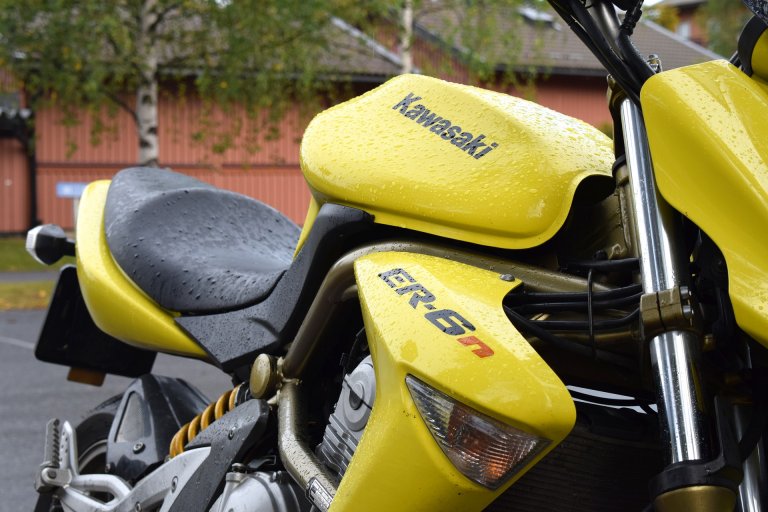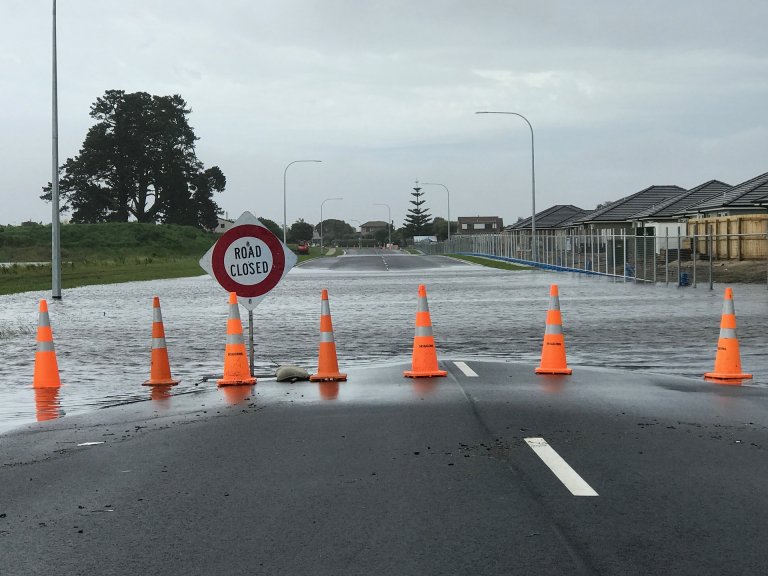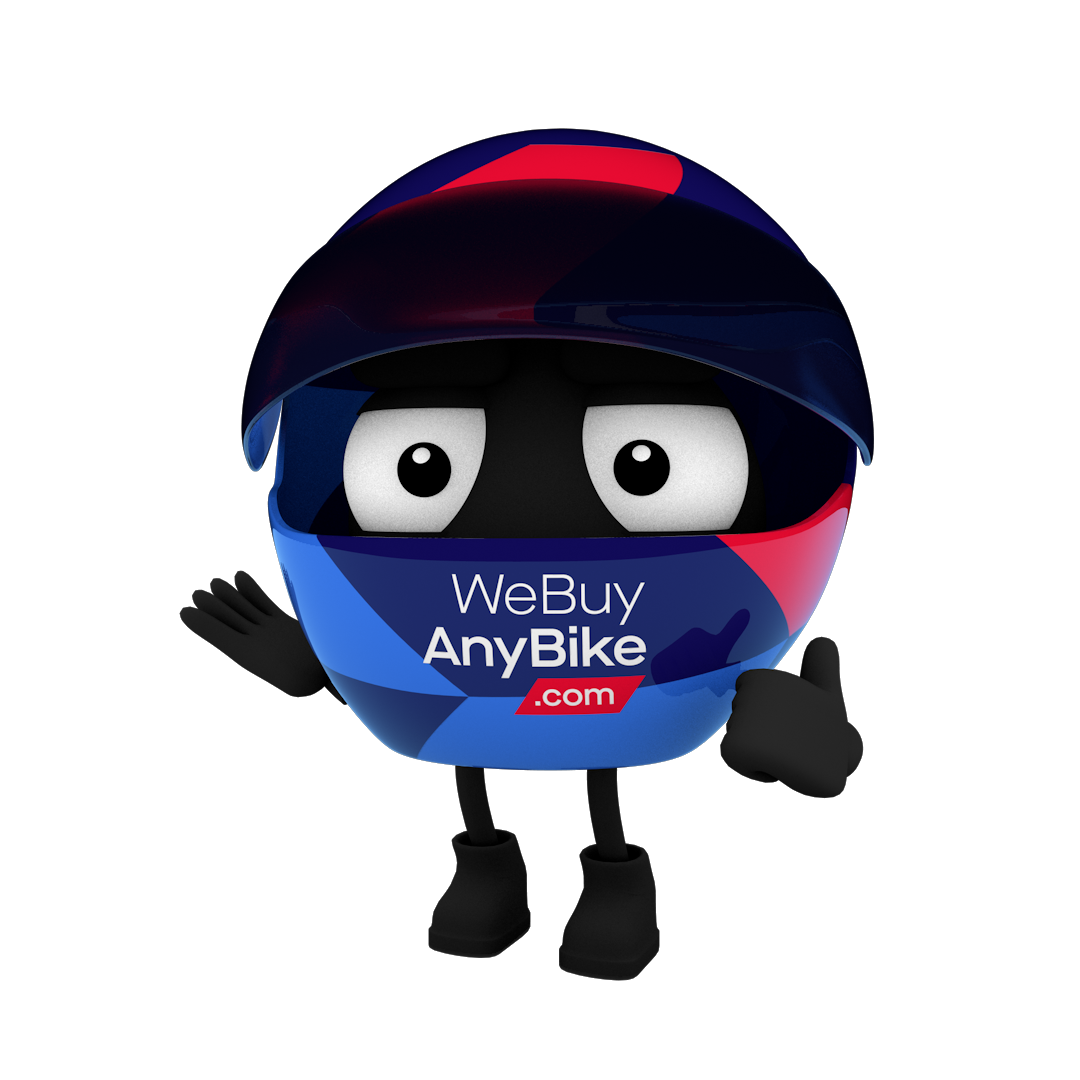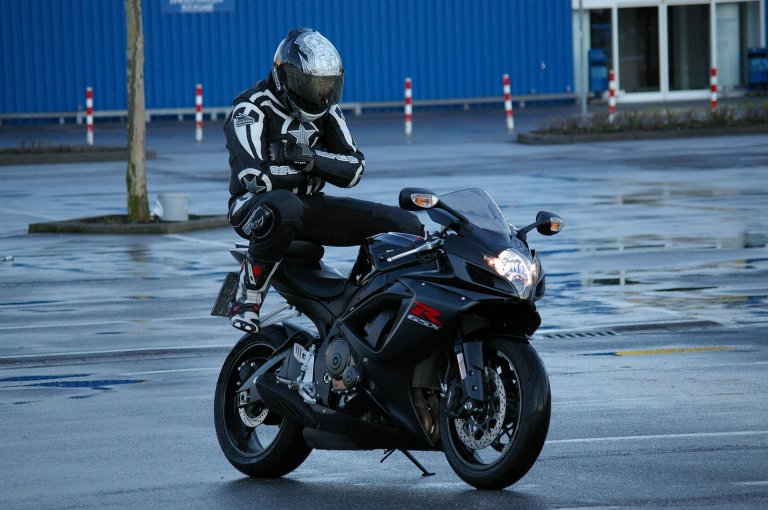Riding In The Rain

Correct Gear
You guessed it, waterproof gear is the way to go. There are some great options out there, a good one or two piece, gloves and boots. If even one part of your body gets soaked in a downpour, it instantly starts getting cold and discomfort sets in. Waterproof membranes like Gore-Tex are excellent. As well as trying to keep dry you need to stay warm, so look into layering up. The trick is multiple thin layers rather than one thick undergarment, this is said to keep the warmth in more and it also means that if the sun does come out, you can easily remove a couple! Think about the correct clothing, but also take into account an anti-fog solution for your visor. With the added moisture in the air, it’s pretty much definite your visor will mist up. It's scary to be riding along and completely lose visibility, so check out anti-fog, breath guard, Fog City and so on. Apply Rain-X or something similar to your visor, the rain droplets will bead up and run off quicker which helps aid your vision.Be Smooth
Changing the way you ride in the rain is extremely important. A lot of accidents have been caused due to riders thinking they can do their usual speed. Manoeuvres and braking... its dangerous stuff. Everything must be smoother while riding in bad weather. Throttle adjustments should be increased and decreased gently. No sudden or jerky movements. Braking is really the one to watch out for. You won’t have the same traction as in the dry. Therefore slowing well in advance is necessary. Time and space!... Look even further ahead than you usually do, to avoid any jabbing of the brakes.
Manholes & Markings
Avoid these two! In the rain, both of these things can become like black ice. Anything that reduces your traction on the road during the rain is dangerous. Look well in advance and if you spot one just calmly and smoothly go around them. No sudden braking or acceleration! If you realised a little too late, and your heading straight for one of the above. Don’t do anything rash... Just roll over them without changing speed or direction. If you find yourself in a situation where you cannot avoid changing your line over one of these hazards. Just keep your hands relaxed and limit the lean on your bike.Get Loose
Riding in the rain safely requires smooth movements. Clinging to the handlebars and becoming ridged isn’t good. There are a few reasons for this:- The tighter you grip the bars, the quicker you’ll get tired
- Over exaggerates any movements you make
- Make handling even worse.
Dry Lines
Finding ‘dry lines’ in the rain probably sounds a bit ridiculous. But a good tip when following other vehicles is, follow their tracks. Car tyres can almost act like a plough. Pushing the rain to the side of a brief moment. So take advantage of this! Use these lines, where safe. Finding the driest part of the road, in general, is advised. The thrill seekers out there might want to head straight for a puddle to create a little splash. But this won’t end well for everyone! Aquaplaning is terrifying, gliding along with absolutely no control of speed or direction. This can get even worse if you hit a diesel spill. Which will be dispersed more in rain. Once you’ve been out in the rain a few times. You’ll start to feel more comfortable. You'll realise that riding in the rain can actually be quite satisfying. Making you a better and more confident rider. If you embrace the weather. So, you might even be able to get the bike out of the garage more than twice a year!
If you live in the UK. Not wanting to ride in the rain basically means tucking your bike away for most of the year... Minus a couple of days. So mastering this skill equals more time on your bike. This can only be a good thing, right?...
Once you’ve been out in the rain a few times. You’ll start to feel more comfortable. You'll realise that riding in the rain can actually be quite satisfying. Making you a better and more confident rider. If you embrace the weather. So, you might even be able to get the bike out of the garage more than twice a year!
If you live in the UK. Not wanting to ride in the rain basically means tucking your bike away for most of the year... Minus a couple of days. So mastering this skill equals more time on your bike. This can only be a good thing, right?...
Helmut
7 Jul 2017
For any blog enquiries, please emailmarketing@webuyanybike.comView all posts by Helmut

